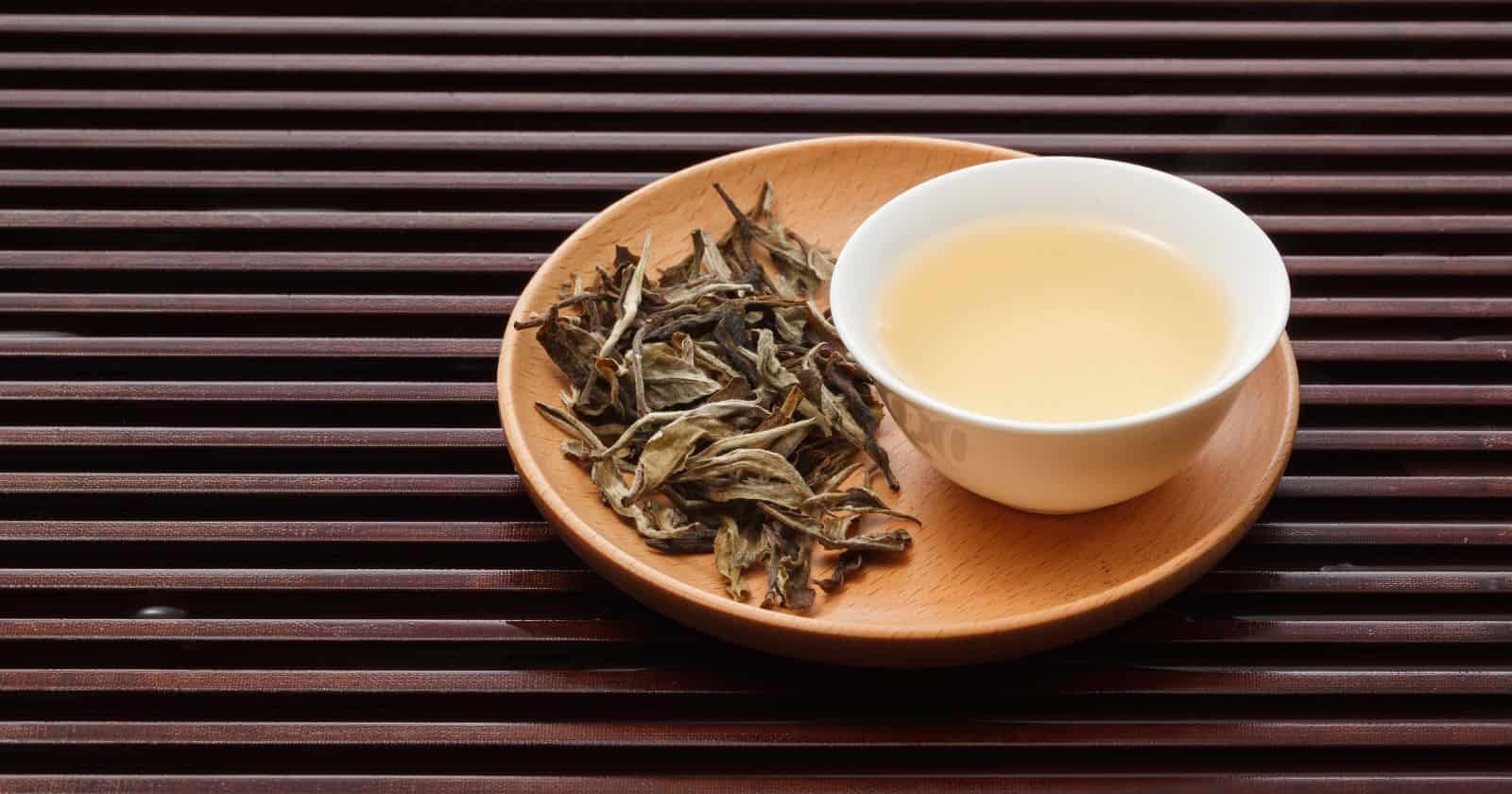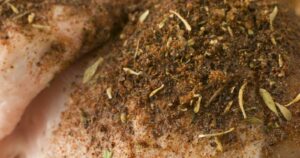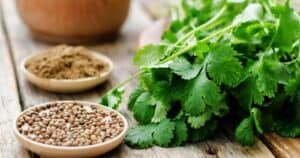If you’re a tea lover, you know every type of tea has unique flavor, aroma, and benefits.
But have you tried white tea yet? If not, you’re missing out on a lot!
White tea is made from the young leaves and buds of the Camellia sinensis plant. It is minimally processed and undergoes little to no oxidation, which gives it a light and delicate flavor profile. White tea is characterized by its pale color, subtle sweetness, and floral or fruity notes.
It is known for its high antioxidant content, which may provide numerous health benefits. White tea is available in different varieties with unique tastes and aromas.
In this article, we’ll dive deep into the world of white tea and cover everything you need to know to enjoy it to the fullest.
First, we’ll take a closer look at what white tea is and how it differs from other types of tea.
Then, we’ll explore the benefits of drinking white tea, such as improving heart health, promoting weight loss, and preventing aging.
Finally, we’ll provide some tips on brewing the perfect cup of white tea and share some delicious suggestions to help you incorporate white tea into your daily routine.
What Is White Tea?
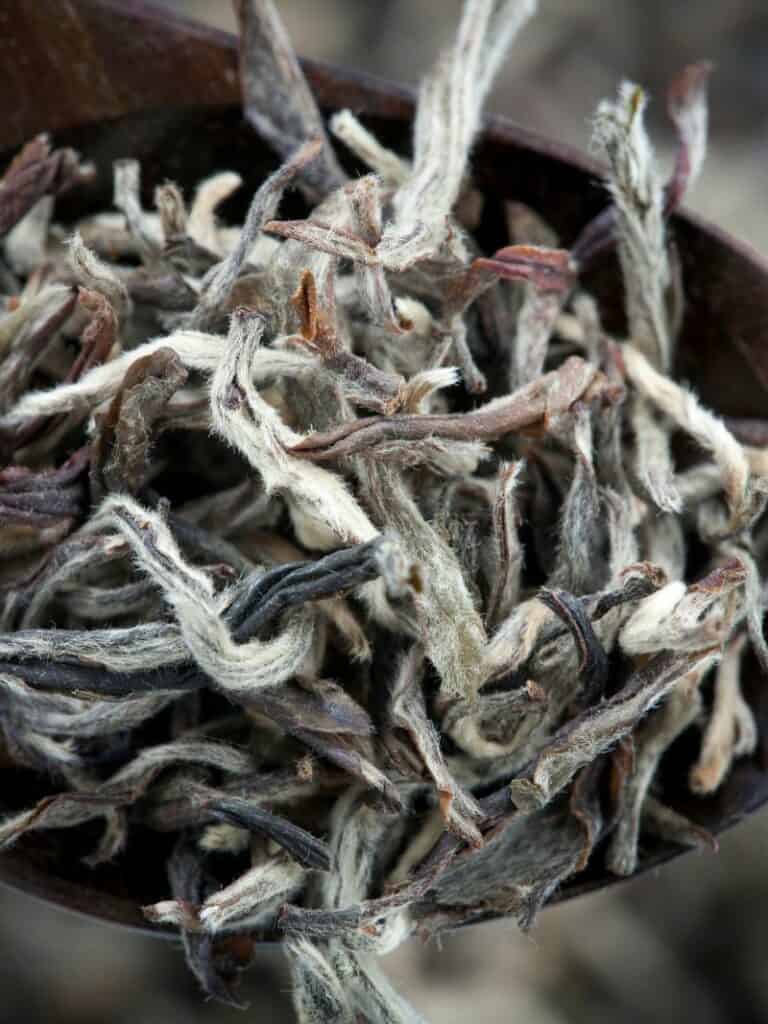
White tea is one of the earth’s most delicate and fragrant beverages, made from only freshly hand-picked tea leaves or buds. It is minimally processed, making it richer in antioxidants and polyphenols than other teas.
White tea has many health benefits attributed to it, from improved oral and skin health to antioxidant and cardioprotective properties.
In addition, various weight loss benefits associated with white tea may help slim down. Regular consumption of white tea can also contribute to better overall well-being.
White Tea Varieties: Exploring Different Types Of White Tea
White tea is available in several varieties with unique tastes and aromas. Silver Needle, White Peony, and Longevity Eyebrow are the most popular white tea varieties.
Silver Needle
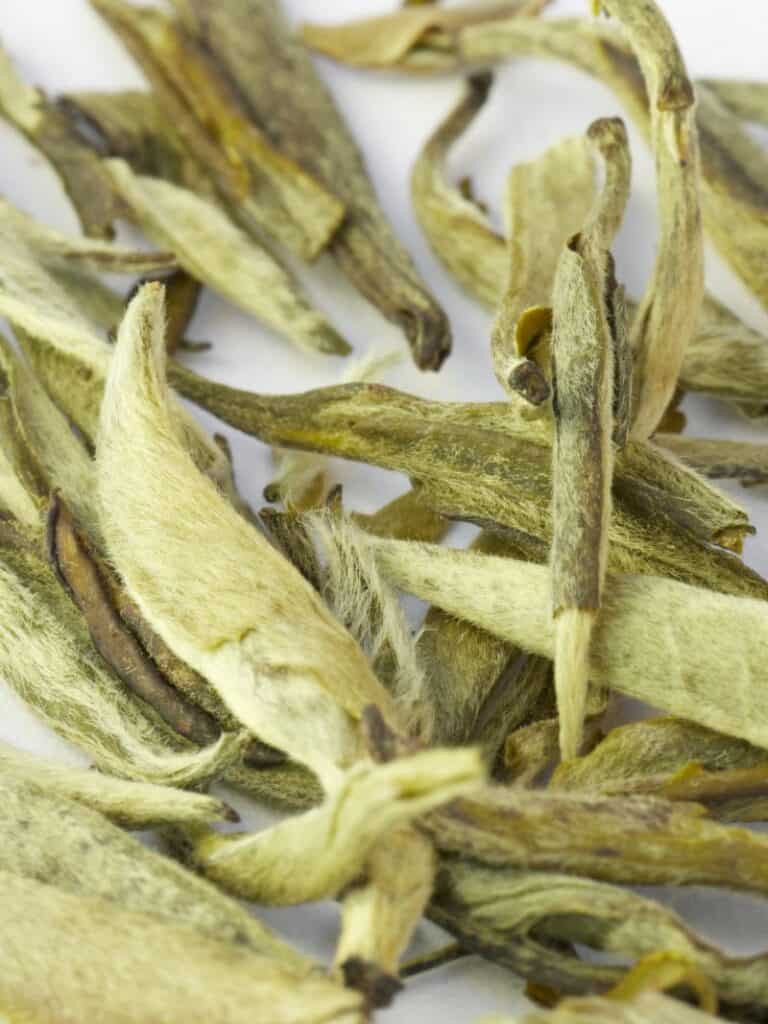
Silver Needle, also known as Bai Hao Yinzhen, is made from only the young, unopened buds of the Camellia sinensis plant. It has a delicate flavor profile with a subtle sweetness and a hint of floral notes.
White Peony
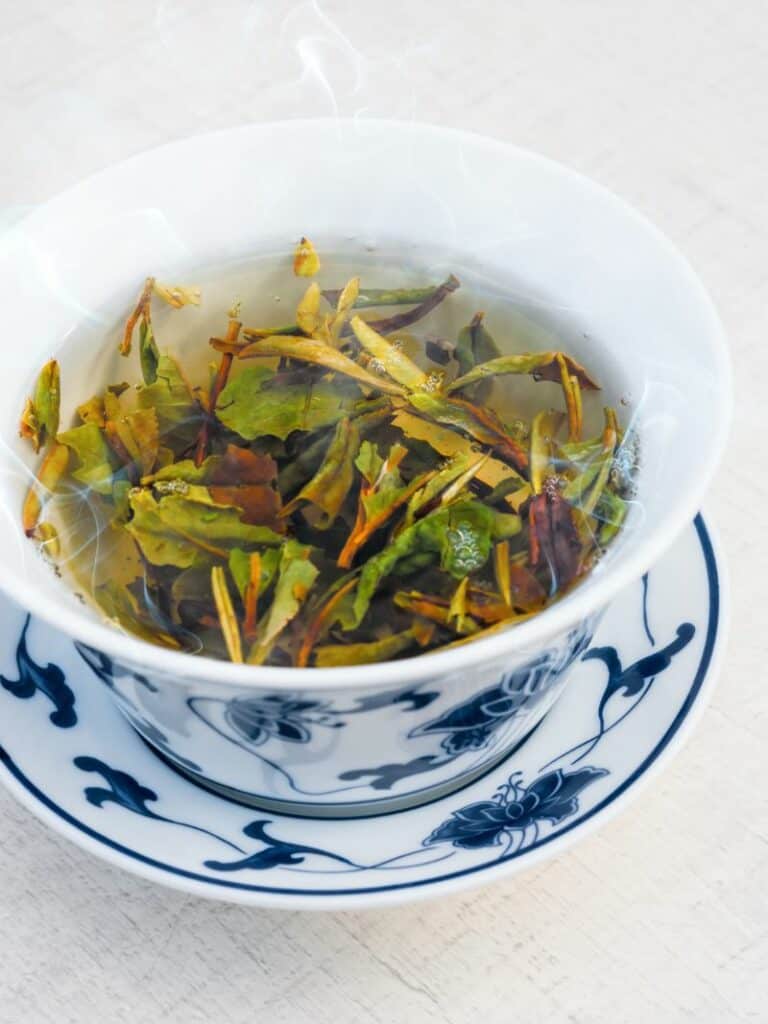
White Peony, also known as Bai Mudan, is made from the young leaves and buds of the Camellia sinensis plant. It has a bolder flavor profile than Silver Needle, with a slightly stronger and woodier taste.
Longevity Eyebrow
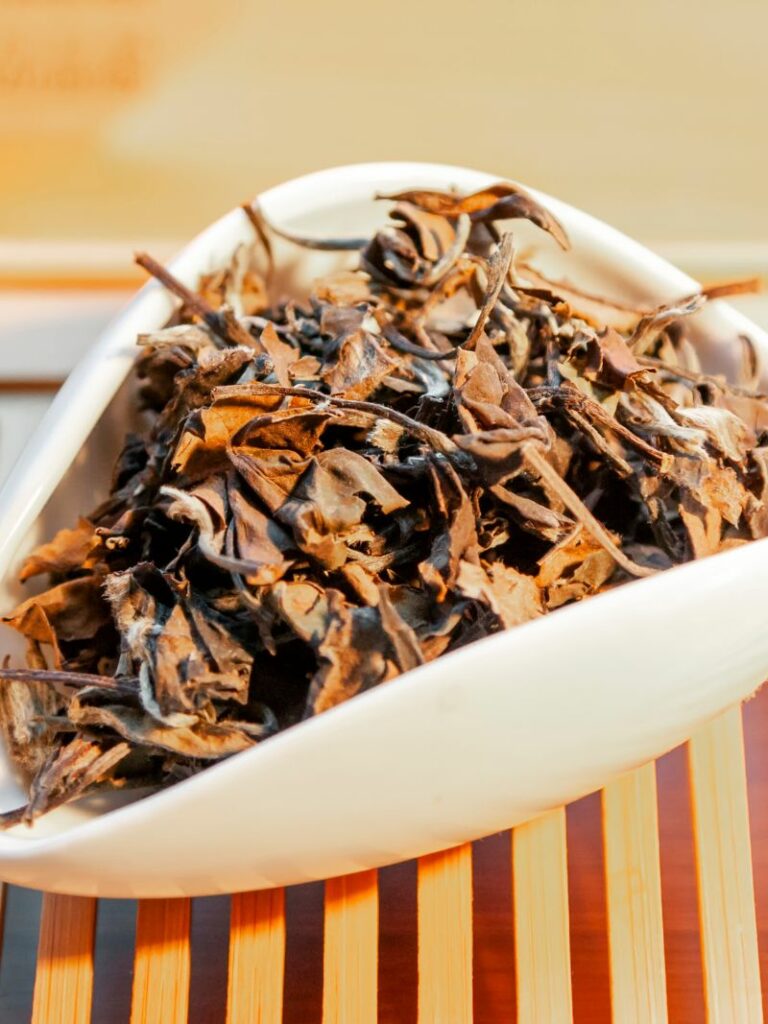
Longevity Eyebrow, also known as Shoumei, is made from the older leaves of the Camellia sinensis plant. It has a stronger and earthier flavor profile than Silver Needle and White Peony.
Gongmei
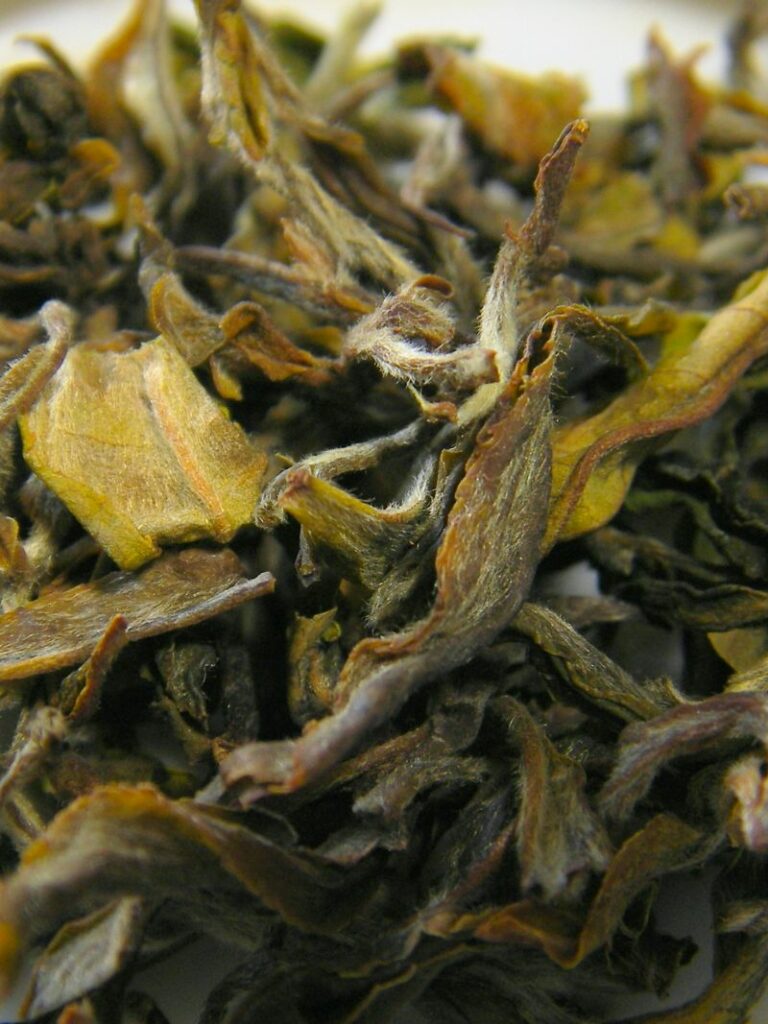
Gongmei, also known as Tribute Eyebrow, is made from the leaves and buds of the Camellia sinensis plant that are slightly more mature than those used for Silver Needle and White Peony.
It has a fuller flavor profile with a slightly earthy taste and a hint of sweetness.
Each of these white tea varieties offers its unique taste and aroma, making white tea a diverse and exciting type of tea to explore.
Whether you prefer a delicate and floral Silver Needle or a rich and bold Tribute Eyebrow, there’s a white tea out there for everyone to enjoy.
Health Benefits Of White Tea: Why It’s Good For You
White Tea has several powerful health benefits and contains nutrients such as antioxidizing polyphenols and tannins.
White tea’s antioxidant properties may help reduce skin aging signs, and studies have also suggested potential anti-cancer properties.
Furthermore, it can also help reduce inflammation in the body and protect against oxidative stress.
Here are some of the health benefits of drinking white tea:
- It contains high levels of antioxidants that can help fight inflammation and oxidative stress.
- It may help improve heart health by reducing the risk of heart disease and lowering blood pressure and cholesterol levels.
- It may aid in weight loss by boosting metabolism and reducing the formation of new fat cells.
- It has antibacterial properties that can help promote oral health and prevent infections.
- It may help improve brain function and reduce the risk of neurodegenerative diseases.
- It may help improve skin health by preventing premature aging and reducing the risk of skin cancer.
- It may help boost the immune system and reduce the risk of chronic diseases.
- It contains low levels of caffeine, making it a good option for those who want to reduce their caffeine intake.
For those looking to unwind while still receiving a boost of antioxidants and other health benefits, White Tea could be an ideal choice.
White Tea Vs. Green Tea: What’s The Difference?
White tea and green tea are two popular types of tea that are often compared and contrasted.
While both types of tea come from the same plant, there are several differences between them.
- Processing: White tea is made from the young leaves and buds of the tea plant and undergoes very little processing, while green tea is made from mature leaves and is processed by steaming or pan-frying.
- Oxidation: White tea is minimally oxidized, while green tea is light to moderately oxidized.
- Flavor: White tea has a delicate, subtle flavor with floral or fruity notes, while green tea has a grassy, earthy flavor.
- Caffeine content: White tea contains less caffeine than green tea, making it a good option for those who want to reduce their caffeine intake.
- Antioxidant content: While both types of tea contain antioxidants, white tea has higher levels of certain antioxidants due to its minimal processing.
Brewing White Tea: Tips And Techniques For The Perfect Cup
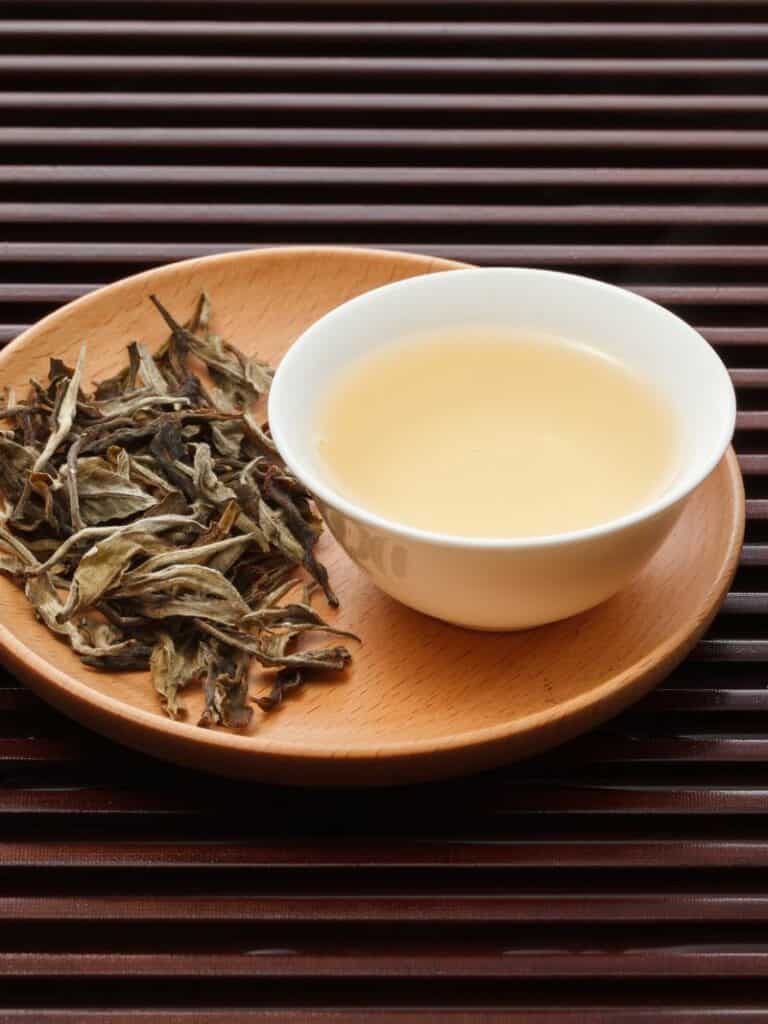
Brewing white tea properly is essential for creating the perfect cup. White tea leaves require a different steeping process than black tea.
For the latter, the suggested time is two to three minutes. However, if you steep for too long, the tea can become bitter. With white teas, you should use two teaspoons of tea leaves for every cup (8 ounces) of water.
Since white tea leaves are much less dense and compact than other types, it’s best to increase the number of leaves used between one and two teaspoons per cup.
Once your water and tea are ready, slowly pour the hot water over the tea in a teapot or cup and let it steep for around two to three minutes before straining it out and pouring it into cups, ready to enjoy!
Of course, white tea can also be served with ice or cold-brewed within 24 hours. If boiled water is preferred, reach 100°C (212°F), and do not boil again once it has cooled off; this could impart an off-flavor onto your brew.
As for dosage goes, one teaspoon of white tea per cup should do — but it all depends on your preferred strength — so feel free to experiment!
If you need something sweetener, add a bit of honey as a natural sweetener too! Additionally, white tea can be added to various culinary recipes and used in snacks such as cake edibles and chocolates.
When using white tea in cooking ideas or recipes, experts recommend boiling the herbs at least 10 minutes before drinking or adding them to dishes like scones or cakes; this ultimately helps achieve that enjoyable flavor everyone loves about consuming high-quality white teas.
Can White Tea be Used in Cooking?
Yes, white tea can be used in cooking! Its delicate and subtle flavor can add a unique twist to various dishes and desserts.
Here are some ways to use white tea in cooking:
- Infuse white tea into broths or sauces for a subtle and refreshing flavor.
- Use white tea to poach fish, chicken, or tofu for a healthy and flavorful dish.
- Incorporate white tea into marinades or dressings for a light and tangy flavor.
- Use brewed white tea to make sorbets, ice creams, or puddings for a refreshing and creamy dessert.
- For a subtle and unique flavor, infuse butter or cream with white tea and use it in baked goods, such as cakes, cookies, or scones.
- Add white tea to grains, such as rice, quinoa, or couscous, for a light and fragrant side dish.
- For a refreshing and unique twist, use white tea to flavor cocktails, such as martinis or margaritas.

